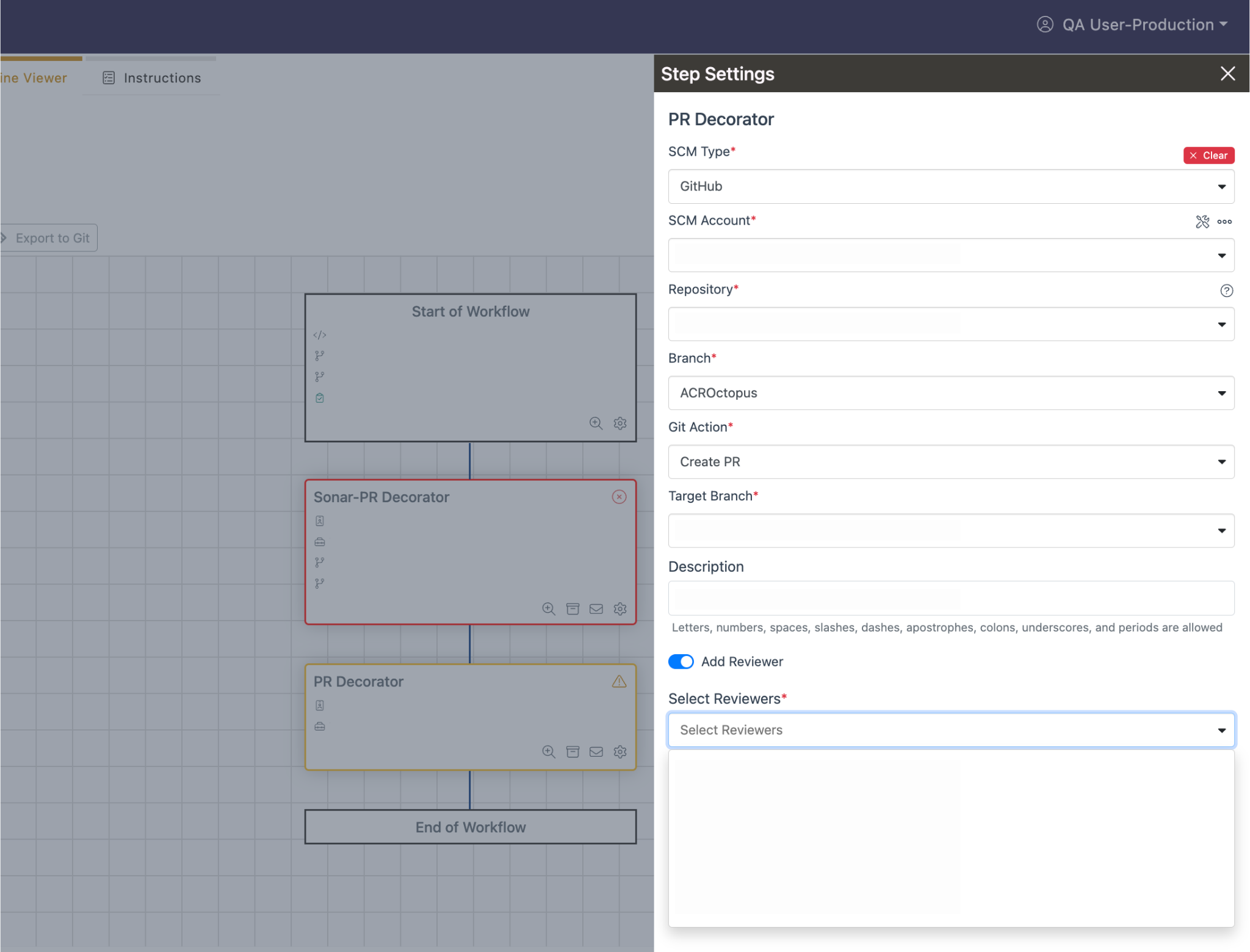Code Reviews
Code Review is a crucial part of software development. Code Review, also called as Peer Code Review, is the act of deliberately and systematically coordinating with fellow programmers to verify each other’s code for mistakes. A code review helps developers enhance the quality of code before merging and shipping it. It serves as a quality assurance of the code base. It is a methodical assessment of code designed to identify bugs, improve code quality, and aid developers learn the source code. It also accelerates and streamlines the process of software development like no other practice can.
When done accurately, code reviews save time, streamline the development process upfront and significantly reduce the volume of work required later of QA teams. Reviews can also save money, particularly by identifying the types of bugs that might escape undetected through testing, production, and into the end-users’ laptops, whose reviews may lead to a decline in the sales of your product.
Code reviews also deliver a few additional, more human-centric ROI. Work environments that encourage programmers to coordinate on their code tend to promote more effective communication and camaraderie, share a sense of ‘ownership’ for any piece of code, provide an invaluable educational context for junior developers, better ways to write clean code, solve generic problems with useful shortcuts, and visually identify any number of potential sources of trouble, such as memory leaks, buffer overflows, or scalability issues. Code review makes it effortless for an organization to curate, govern, and manage the lifecycle of digital artifacts beyond the source code.
Developing a strong code review process sets a foundation for continuous improvement and prevents unstable code from being shipped to customers. The code review process also plays a vital role in disseminating knowledge throughout an organization. In the 2022 Global DevSecOps Survey, 76% of developers who participated in the survey considered code reviews as ‘very valuable.’
7 Code Review Best Practices for Developers
Let us now examine the best practices for performing an effective code review. A code review process varies from team to team; it’s an approach that requires customized changes according to the projects and members involved. The following are 7 best practices to keep in mind while analyzing your code.
- Determine Goals, Standards & Expectations: Before you implement a code review process, it is critical to decide on significant metrics and define distinct goals. Goals include acceptable coding standards in the organization. Setting standards ensures that each software product developed in the organization meets the organizational standards.
- Convey Goals & Expectations: Conveyance of goals and expectations is indispensable. Not communicating goals and expectations to all members in the team can lead to uncertainty in the overall result. When developers know what is expected from them, it makes it easier for them to accomplish their tasks.
- Specify a Code Review Process: After the goals and expectations are defined and disseminated to everyone, it is time to specify a code review process. Having a set code review process helps everyone to be more organized and reduces the time expended on technical debt.
- Promote a Culture of Positive Code Review: In several organizations, although code reviews are used to evaluate the developer’s performance, it should be used for something beyond that – to develop an ecosystem of learning. Instead of merely apprising them of their mistakes, it should enable them to learn to solve problems and avoid repetition of mistakes.
- Automate to Save Time: Automated Code Review tools such as Codegrip are great assets for any software company. Tools similar to these can help reduce the frequency of code review from a few seconds to even a few minutes. They can scan the total codebase in less than a minute and identify defects besides providing solutions for them.
- Make Code Review Sessions Productive by Limiting Them: Identify what works for your team. For instance, instruct them to spend no more than one hour or 200 lines of code and encourage them to adhere to it. It is an accepted fact that a person’s efficiency diminishes if he works incessantly for hours without taking a break. The same logic applies when trying to review code. Research reveals that beyond the 60 minutes benchmark, the reviewer’s efficiency declines, resulting in a few of the defects being ignored.
- Include Everyone in the Code Review Process: Code reviews are an excellent way to help new members of the team to keep pace with the code base — both by reviewing code and having their code reviewed by more experienced and senior developers in the team. Including everyone in your code review process will also ensure greater flexibility, especially when people go on vacation or have quit the team.
Disadvantages with Manual Code Reviews
In a Manual Code Review (MCR), the source code is read line by line to assess for potential vulnerabilities. This involves a lot of skills, experience, and patience. The issues or errors identified via this method will significantly help to increase the organization’s efficiency. But there are a few disadvantages with such a method.
- Time Consuming: MCR is time consuming as every single line of the code must be reviewed. Even though it may lead to better code quality, it takes a significant amount of time to look and read these codes line by line.
- Subtle Mistakes: As the reviews are done by reviewers on an individual basis, it is quite possible that the human eye can overlook a few vulnerabilities related to integration or other isolated issues.
- Excessive Costs: Although it is good to have a team of trained and skilled engineers to handle an efficient manual code review, it comes with great costs. It takes several years of experience for a reviewer to be able to manage reviews.
Why You Should Automate Your Code Review Process
Automated Code Review (ACR) is a process comprising the analysis of the code using smart ACR tools. It involves the analysis of the code to identify the vulnerabilities. ACR saves the time and effort required in MCR. The following are a few of the advantages of performing ACR:
- Saves Time & Reduces Human Efforts: You can review complete changes made in the code concisely with the least effort.
- Better Coverage: ACR tools help significantly in wider and better code coverage.
- Effortless Scaling Up: If you have a large team of developers, you can automate the code review process in an effortless manner without any issues.
- Simple to Use: The ACR tools are easily accessible and simple to use. You just need to set them up with Code Hosting Provider (GitHub, GitLab, etc.) and start using them.
- Economical: You can get the ACR tools for an economic price and it helps you yield a better ROI.
Staying Compliant
Several best practices relating to code review specify that you should not review more than 400 lines of code during any given review to ensure you are not overlooking any defects. Opsera’s ACR tool ensures that you need not wait for the work to accumulate before checking for accuracy. Our ACR will provide you immediate feedback on the code you write as you write it, which implies that your projects will be consistent right from the inception. When you have this tool, it means you can be rest assured that your work is accurate and safe as you continue to build it.
Regular code reviews should not be done at the eleventh hour to ensure the previous work you have completed is flawless. At Opsera, we believe that code reviews are a long-term and not a short-term thing, and by continuously checking the accuracy and quality of your code in real-time, you will not be compelled to spend several hours making plenty of last-minute changes before submitting for MCR. Our ACR tool can also be customized, implying that you can define categories or rules that are specific to the tasks you are working on.
When you have a smart tool that can be customized based on compliance-related criteria, then you and your team can save a lot of time on every single type of audit. ACR enables you to equip yourself with the appropriate checks and balances to ensure every line of code your team creates is compliant with various regulations.
How Can I Get Code Reviews Faster?
We always want to be swift at code review. A critical aspect is how developers squander their time in the process of code reviewing. Code reviews (pull requests, commit validation or approval) can be monotonous and draining. Below are a few aspects garnered from people who are doing it right. These are small hints from users that greatly help.
- Review Less: Smaller commits lead to smaller and more manageable code reviews. Moreover, other clear benefits segregating work into smaller chunks leads to better understanding of the intent of the change, and therefore, greater understanding into ways to apply it.
- Limit Time: At times, code reviewing tends to become secondary in the process. Hence, it’s usual to see it slipping away through the day when ultimately you are all alone in the office verifying the work of other people. One of the effective ways to mitigate this is by allotting a specific time slot in the day to review code. When that is not possible, try to apply a maximum value to it, say, 60 or 70 minutes.
- Delegate Work: Ensure code reviews are not the responsibility of a single person. A few organizations concentrate code reviews on one person.
It causes exhaustion to such people, leading to delayed deploy times, and awful reviews (decreased attention span).
- Have a Code Review Checklist: Having a checklist to review code significantly enhances the efficacy of the process. Sometimes, in the midst of a review, you may discover an issue and remember you haven’t been paying much attention to that particular problem earlier, which ultimately leaves you with the ambiguity of an incomplete task.
- Add ACR Tools to Your Workflow: A great way to reduce the time it takes to review code is by limiting the number of aspects of your checklist that you need to pay attention to. By adding ACR tools, you can automate a few aspects of your code reviews such as code style, best practices, and common issues. This ensures that you only review what matters. Automation enables you to be better and saves a lot of time. It is a great way to optimize your review workflow process.
What are ACR Tools?
The advantages of code reviews are no longer questioned. Automating the code review process has become one of the hottest trends in software engineering.
There is a need for a method that can employ the tool-based code review and eliminate the indirect dependency to get swifter results. The solution to this is ACR tools.
In the recent years, there has been a deluge of ACR tools. Several industry experts are comparing what code review tools are doing to engineering with what Salesforce did to sales.
Tools enhance speed and accuracy. They integrate with your existing stack and software development process to ensure they don’t disrupt your flow. For instance, many Git tools already contain pull requests to launch the code review process. A pull request allows you to discuss and review the code changes with your team of collaborators before the changes are merged into the base branch.
However, this is mostly still a manual process that can cause significant delays in review time. What happens if no one attends to your pull request? In such instances, will you merge without a review or merely with a basic review? In this case, the whole point of code review becomes meaningless if it leads to a high risk of introduction of bugs into production.
For this reason, a new set of ACR tools have emerged in the market. ACR tools have two primary benefits:
- They aid developers get back to coding – rather than reviewing – swiftly.
- They help with improved code quality and reduced cycle time.

Improve Developer Productivity with Opsera
Opsera’s continuous orchestration platform provides self-service toolchain automation. With Opsera, development teams can use the tools they want, operations teams can gain enhanced efficiency, and business leaders can have unmatched visibility.




